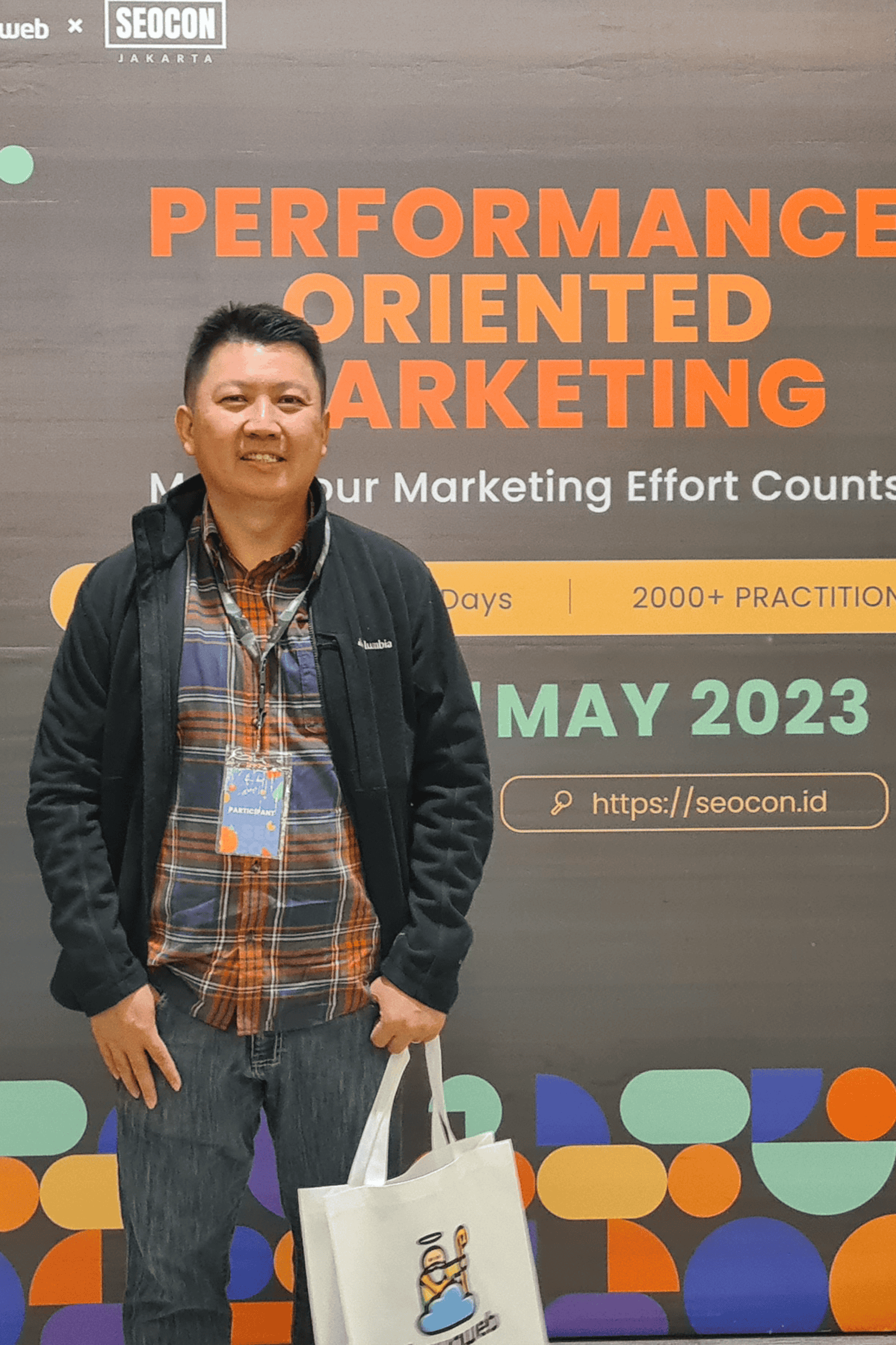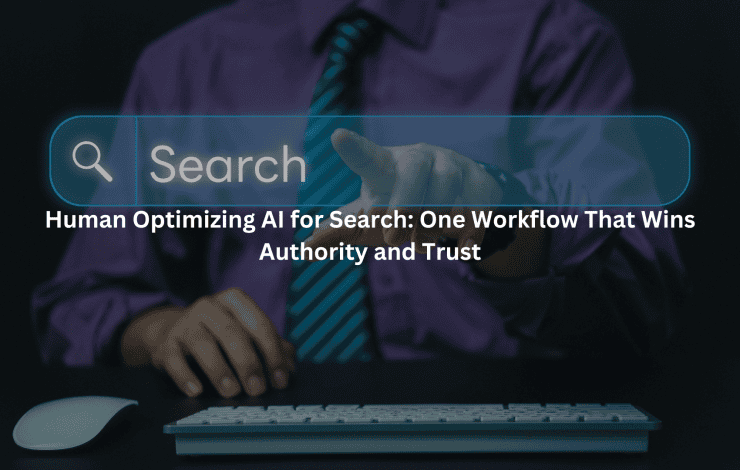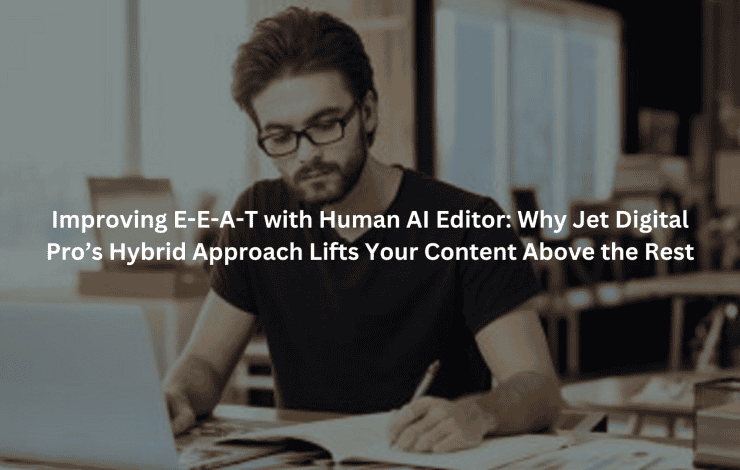Editing content alongside AI sometimes feels like standing in two worlds. One foot planted in intuition, the other in algorithms. In the office at Jet Digital Pro, there are days when the only sound is the soft clatter of keyboards and the low whirr of AI engines parsing keyword clusters.
The editor’s job is to thread the needle, shape content that satisfies both the logic of machines and the curiosity of real people. Here’s how that actually happens, in practice, every day.
Key Takeaways
- Human-AI collaboration relies on structured, skimmable content with clear signals for both readers and search engines.
- Editorial oversight and E-E-A-T principles (Experience, Expertise, Authoritativeness, Trustworthiness) turn AI output into credible, relevant, and trustworthy pages.
- Ongoing monitoring, optimization, and open communication between editors and AI ensure continuous SEO growth.
Optimizing Content Structure and Readability
You can spot effective SEO content from the start. It opens with a summary, not just a hook. There’s a reason for that. Google, and by extension its AI, pays extra attention to beginnings. At Jet Digital Pro, we (and our editors) have learned that structure isn’t just for show. It’s a map.
Designing Clear and SEO-Friendly Headings
Headings are more than decoration. They’re signposts for both algorithms and humans. Using a hierarchy, H1 for the main title, H2s for major sections, H3s for supporting ideas, tells search engines how ideas relate. Readers scan. AI parses. Both benefit. [1]
- Start with a focused H1 (main keyword, under 60 characters)
- Use H2s for main arguments or sections
- Break out specifics or lists with H3s and, when necessary, H4s
- Place summaries and key takeaways at the top, in plain language
It’s not just about robots. Human readers, especially those skimming on phones, appreciate this structure. Jet Digital Pro bakes it into every draft.
Enhancing Navigation and User Experience
Long articles demand more navigation. Tables of contents and jump links aren’t fancy add-ons, they’re necessities. They let users skip to what matters. AI sees the organization and rewards it with better crawling.
- Insert a clickable table of contents for articles over 1,200 words
- Use jump links for FAQs or dense guides
- Add FAQ boxes to surface more long-tail, conversational keywords
We once reformatted a client’s 3,000-word pillar page with a TOC and saw average time-on-page jump by 20 percent. The bounce rate dropped, too.
Maintaining Freshness and Clarity
Content gets old. AI knows. So do readers. We schedule quarterly reviews of top posts at Jet Digital Pro and update stats, refresh intros, and clarify sections. This isn’t busywork. Google’s crawling bots, especially with BERT and MUM models, prefer pages that reflect current trends and user language.
- Revisit and update evergreen articles every 3 to 6 months
- Rewrite unclear sections, update links, and check for outdated advice
- Watch for shifts in AI model preferences (like more natural language queries)
Aligning Content with Search Intent and On-Page SEO
Search engines don’t just look for keywords. They look for intent. Is this person researching? Looking to buy? Wanting a how-to? We use AI-driven keyword research tools, but human judgment still calls the shots.
Conducting AI-Driven Keyword Research and Topic Clustering
AI can pull hundreds of related search terms and questions in seconds. At Jet Digital Pro, we cluster these into logical groups, mapping them to user intent. [2]
- Use tools like Ahrefs, SEMrush, and Google’s People Also Ask
- Build clusters (e.g., “SEO strategies,” “AI content editing,” “on-page SEO best practices”)
- Assign clear intent to each topic: informational, transactional, how-to, etc.
For example, if an article targets “SEO strategies for human AI editor,” supporting clusters might include “keyword clustering,” “content optimization tips,” or “AI writing tools for agencies.”
Natural Keyword Integration and Avoiding Over-Optimization
Keyword stuffing is a relic. Now, context and synonyms matter. AI models spot awkward repetition. Readers do, too.
- Blend primary and secondary keywords naturally
- Use synonyms, variations, and related phrases
- Keep keyword density at 1 to 2 percent, never forced
- Read aloud to check for flow
AI-generated drafts tend to overuse certain phrases; human editors smooth them out so content feels authentic.
Strengthening On-Page SEO Fundamentals
On-page basics are still king. Titles, meta descriptions, URLs, headings, they all matter.
- Titles: descriptive, keyword-rich, under 60 characters
- Meta descriptions: clear summary, main keyword, under 155 characters
- URLs: short, focused, no filler words
- Headings: logical hierarchy, match user intent
We check every draft for these elements before publishing. It’s tedious, but crucial.
Emphasizing E-E-A-T and Human Editorial Oversight

Google’s E-E-A-T framework changed the game. Experience, Expertise, Authoritativeness, and Trustworthiness aren’t checkboxes, they’re woven into good content. AI can help, but only people can truly deliver on these values.
Demonstrating Experience, Expertise, and Authoritativeness
People trust people, not bots. For YMYL (Your Money or Your Life) topics, firsthand experience is essential.
- Feature author bios with credentials
- Link to reputable sources
- Show real-world results and case studies
Jet Digital Pro often includes brief editor notes or bylines for high-stakes content, giving readers confidence.
Building Trustworthiness Through Transparency
Trust signals can be subtle. Secure sites. Real contact info. Positive reviews. Citing reliable sources.
- Use HTTPS and display privacy policies
- List a business address and phone number
- Show user reviews and testimonials where relevant
- Reference data and studies with clear citations
One agency partner saw conversion rates climb after adding a simple trust badge and updating their About page.
Human Review of AI-Generated Content
No AI model, not even GPT-4, can guarantee perfect accuracy or tone. Human editors are the last line of defense, ensuring every piece:
- Meets E-E-A-T standards
- Reflects brand voice
- Corrects factual errors or outdated info
We run content through an 11-step human editing process. Even the best AI needs a second pair of eyes.
Enhancing Human-AI Collaboration in SEO Workflow
AI is a tool. Editors are the craftspeople. The best results come from letting both do what they do best.
Using AI for Rapid Content Generation and Keyword Suggestions
AI drafts quickly. It suggests trending keywords and performs technical audits in minutes. Jet Digital Pro uses these insights, but never publishes without review.
- Use AI to build outlines, gather keyword clusters, and spot technical SEO gaps
- Let AI suggest topics based on search trend data
These efficiencies let editors focus on nuance.
Applying Human Editorial Expertise to AI Outputs
Editing means more than checking grammar. It’s about tone, creativity, and trust.
- Rewrite awkward AI phrasing
- Add unique anecdotes, examples, or case studies
- Make subtle technical SEO tweaks that AI misses
A client once remarked that our edits “made the AI draft sound like a real person wrote it”, the highest compliment.
Monitoring Performance and Continuous Improvement
SEO isn’t set-it-and-forget-it. It’s a slow, iterative process.
Tracking SEO Metrics and Adjusting Strategies
Analytics drive the next round of edits.
- Monitor rankings, clicks, and time on page
- Watch which keywords are gaining traction, and which are slipping
- Tweak meta descriptions, headings, or content length in response
At Jet Digital Pro, we use Google Analytics and Search Console daily. Sometimes it’s the small changes, a reworded heading, a clarified intro, that shift the needle.
Training Editorial Teams on Evolving AI Tools
Are You a Digital Agency?
White Label SEO Content Services for Agencies
Scalable, customizable, and results-driven content solutions for your clients.
AI evolves. So must editors.
- Hold monthly training sessions on new tools and search algorithm changes
- Encourage editors to test and compare AI outputs
- Share learnings and best practices across teams
Knowledge sharing keeps everyone sharp.
Fostering Communication Between Human Editors and AI Systems
The process works best when editors and AI “talk.” Editors highlight where AI outputs fall flat. AI suggests optimizations editors might miss.
- Debrief after major projects to review what worked (and what didn’t)
- Keep feedback loops open, document changes, flag recurring issues
- Align human creativity with AI’s efficiency
When both sides respect each other’s strengths, content wins.
Practical Advice for Human AI Editors

- Don’t skip the basics: structure, headings, and meta tags still matter most.
- Use AI for speed, but rely on people for substance and trust.
- Make E-E-A-T your north star, experience and authority outlast any algorithm tweak.
- Never stop updating, content ages fast, and so do AI models.
- Make collaboration a habit, not an afterthought. Each side makes the other stronger.
FAQ
How do human AI editors use keyword mapping to improve keyword intent and search engine relevance?
Human AI editors often rely on keyword mapping to connect keyword intent with the actual structure of on-page SEO. They match keyword clusters to specific pages, aligning keyword themes with user intent. This helps avoid keyword stuffing by focusing instead on keyword integration, keyword balance, and keyword focus.
Editors also use contextual keywords to build keyword relationships, strengthening keyword visibility and keyword performance without compromising readability. By organizing long-tail keywords into keyword silos, they improve keyword alignment and organic search reach.
What’s the difference between keyword clustering and keyword grouping in semantic SEO?
Keyword clustering builds keyword silos based on semantic SEO principles, grouping related keyword entities to increase keyword depth and keyword breadth. Keyword grouping, on the other hand, uses LSI keywords, keyword synonyms, and keyword associations to refine keyword coverage on a page.
Human AI editors look at keyword relationships and keyword co-occurrence to decide how to structure content. They’re careful with keyword density, using keyword enrichment and keyword expansion rather than repeating keyword phrases unnecessarily. The goal is better content optimization, not overuse.
How can editors maintain keyword diversity without lowering keyword performance?
Maintaining keyword diversity means editors use keyword variations, keyword proximity, and keyword blending techniques. Instead of repeating the same keyword phrases, they mix in contextual keywords and related search terms to enhance keyword relevance.
Editors rely on keyword research tools and keyword insights to understand keyword potential and keyword effectiveness. Keyword coverage improves when keyword synonyms and keyword associations are used naturally. This approach supports both keyword strategy and keyword tracking without harming keyword ranking or keyword reach.
How do human AI editors identify keyword gaps during content optimization?
Need a Strategic SEO Content Partner?
Let’s craft SEO content that ranks, converts, and grows your brand.
Talk to UsEditors look at keyword competition and keyword trends to spot keyword gaps. They use keyword discovery tools and analyze keyword frequency, keyword influence, and keyword difficulty. Editors often run keyword analysis to find missing keyword opportunities within keyword clusters or keyword silos.
Content relevance is strengthened by filling these gaps with keyword support elements like keyword enhancement and keyword planning. Human insight helps detect keyword intent mismatches that search engine algorithms might miss, especially when natural language processing fails to grasp nuance.
Why does keyword hierarchy matter in keyword strategy for AI-assisted editing?
Keyword hierarchy helps editors prioritize keyword targeting based on keyword importance, keyword ranking, and keyword volume. By placing primary keyword themes at the top and using keyword support elements like keyword synonyms and keyword entities throughout, they improve keyword alignment.
Editors also watch keyword proximity and keyword context to avoid breaking keyword relationships. This careful keyword organization boosts keyword reach and keyword impact while keeping keyword density in check. It also helps match content with user intent more effectively.
Conclusion
If you want to scale SEO content without losing quality, Jet Digital Pro might be the answer. They combine AI speed with human editing to create Google-resilient, high-volume content.
Their process is structured but flexible, ideal for agencies that need results without extra workload. From keyword research to publishing, everything’s covered. It’s content that performs, without the stress.
Want to level up your SEO strategy? Start here
References
- https://www.semrush.com/blog/seo-headline/
- https://originality.ai/blog/ai-topic-clustering-guide
Related Articles
- https://jetdigitalpro.com/human-editor-enhances-ai-readability/
- https://jetdigitalpro.com/human-ai-editor-for-seo-optimization/
- https://jetdigitalpro.com/role-and-value-of-human-ai-content-editors/
P.S – Whenever you’re ready,
we’re here to help elevate your SEO content.
Partner with us for strategic, scalable content that drives real organic growth.
Contact Us Now




